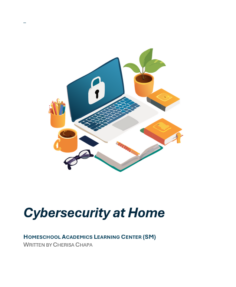Methods, Curriculum Types, and State Requirements
Homeschooling Your Children
Homeschooling is an educational approach where parents or guardians take responsibility for educating their children at home instead of sending them to a traditional public or private school. In homeschooling, the parent acts as the primary teacher or may coordinate learning with tutors or online programs. This method provides a customized education plan catering to a child’s learning style, pace, and interests.

Homeschooling: Getting Started
Homeschooling is an educational approach where parents or guardians take responsibility for educating their children at home instead of sending them to a traditional public or private school. In homeschooling, the parent acts as the primary teacher or may coordinate learning with tutors or online programs. This method provides a customized education plan catering to a child’s learning style, pace, and interests.
It can be an advantageous and effective way to educate your child. However, it requires careful planning and commitment.
Educational Styles
The choice of homeschooling method often depends on the child’s learning style, the family’s values and lifestyle, and the resources available. Many homeschooling families adapt and evolve methods to meet their changing needs and goals.
Charlotte Mason Method
Classical Education
Classical Trivium
Cooperative or Group Homeschooling (Co-Ops)
Eclectic Homeschooling
Hybrid Homeschooling
Interest-Led Homeschooling
Montessori Method
Online or Virtual Homeschooling
Reggio Emilia Homeschooling
Relaxed Homeschooling
Religious Homeschooling
Thomas Jefferson Homeschooling
Traditional Homeschooling
Unit Studies
Unschooling
Waldorf Method
Worldschooling
Smart Parents Cyber Securely
You may be concerned about cybersecurity protections due to increased online activity from remote work or schooling or simply wanting to protect personal information and devices from potential online threats. Your concerns could also stem from a recent data breach, a phishing scam, cyberbullying targeting a child, or identity theft.
This 25-page overview covers the cybersecurity threat landscape, recognizing threat actors, and identifying common vulnerabilities and exploits.
Standardized and Criterion Referenced Assessments
Utilize assessments based on specific standards or criteria to measure students' skill acquisition levels. Tools and...
Develop Empathy
Activities: Reading Stories about Emotions Read stories that explore emotions and social situations, then discuss with...
Encourage Teamwork
Activities: Group Project Form pairs and give them a discussion topic to encourage them to exchange ideas and listen...
Learn Conflict Management
Activities: Conflict Role-Playing Act out common conflict situations and discuss the best ways to resolve them...
Reinforce Turn-Taking
Activities: Circle Conversation Games Arrange a circle where each child must ask a question or make a comment,...
Improving Social Interactions
Activities: Collaborative Board Game Choose a board game that encourages cooperation rather than competition, like...
Develop Understanding of Emotions
Activities: Emotion Cards Use cards showing different emotions and ask the child to identify and name these emotions....
Enhance Active Listening
Activities: Telephone Game Children pass a phrase by whispering it to the next child, reinforcing listening and...
Improve Verbal Communication
Activities: Role-Playing Create social scenarios (like greeting a friend or asking for help) for the child to practice...
Social Skills Activities
Here are some engaging social skills activities for children with autism that can help develop their ability to...
VPD and the Public School System
Visual Processing Disorder (VPD) can be challenging for students in public school systems, as it affects how visual...
Classroom Management for Students with VPD
Managing a classroom or homeschool environment for students with Visual Processing Disorder (VPD) requires creating a...
Visual Processing Disorder Behavioral Management
Managing behavioral challenges for a child with Visual Processing Disorder (VPD) often involves creating a supportive...
Treating and Managing Visual Processing Disorder
Treating and managing Visual Processing Disorder (VPD) involves a combination of strategies that address the...
Task and Assignment for Visual Processing Disorder
For homeschooling a child with Visual Processing Disorder (VPD), tasks and assignments should be designed to reduce...
What is Visual Processing Disorder?
Visual Processing Disorder (VPD) refers to difficulties in the brain's ability to make sense of visual information....
What is Hyperverbal Autism?
Hyperverbal autism is a communication pattern in which individuals on the autism spectrum are overly talkative and may...
Dysphasia and Aphasia and the Public School System
Dysphasia and aphasia are terms often used to describe language disorders, though "aphasia" is more commonly used in...
Classroom Management for Students with Dysphasia and Aphasia
Classroom management for students with dysphasia and aphasia requires a tailored approach prioritizing communication...
Dysphasia and Aphasia Behavioral Management
Behavioral management strategies for individuals with dysphasia (difficulty with language) or aphasia (a more severe...
Questions, Concerns, or Comments
We welcome all those considering homeschooling, whether new to the journey or seasoned professionals, to our Facebook Group. This group supports families with diverse learning needs, providing curriculum, adaptive technology, strategies, and methods to help their children learn, explore, and thrive.
We encourage engaging posts with limited links and promotions. We understand many families are looking for free or affordable curriculum ideas and resources, and we're committed to helping you find them. Whether you need answers to learning changes due to autism, ADHD, dysgraphia, dyscalculia, dyslexia, anxiety, sensory processing disorders, or if your child is neurodivergent, we're here to support you.






